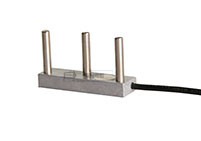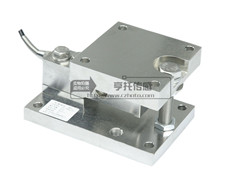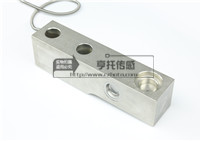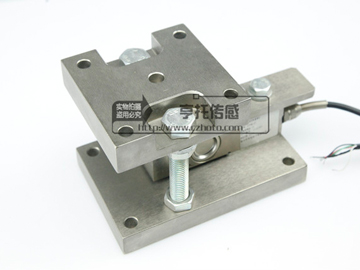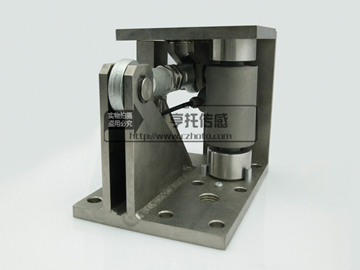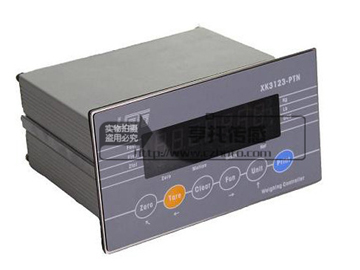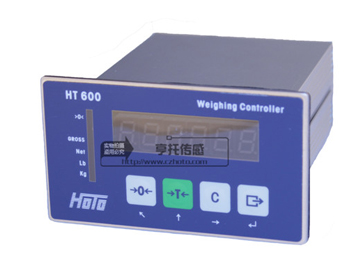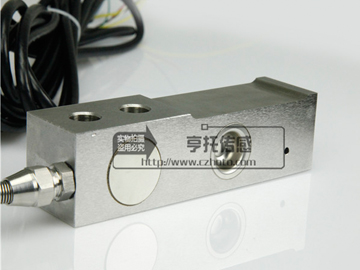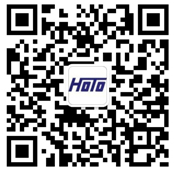About sensor technology training
Sources: | Release date:
2014-03-25
| Browsing volume:
Key words:Sensor technology training
Talking about the selection of weighing sensor from the actual working environment of the sensor
A load cell is actually a device that converts a quality signal into a measurable electrical signal output. The first consideration of the sensor is to consider the actual working environment of the sensor. This is crucial for the correct selection of the sensor. It is related to the normal operation of the sensor, its safety and service life, and the reliability and safety of the entire scale.
The impact of the environment on the sensor is mainly in the following aspects:
(1) The high-temperature environment causes problems such as melting of the coating material, opening of the solder joint, and structural change of the stress in the elastic body. High temperature sensors are often used for sensors operating in high temperature environments; in addition, devices such as heat insulation, water cooling or air cooling must be added.
(2) The effect of dust and moisture on the sensor causing a short circuit. Under these environmental conditions, a sensor with high airtightness should be used. Different sensors have different ways of sealing, and their airtightness is very different.
Common seals are filled or coated with sealant; mechanically sealed seals for rubber pads; welded (argon arc welding, plasma beam welding) and vacuum-filled nitrogen seals.
From the sealing effect point of view, the welding seal is the best, and the filling and sealing agent is the amount difference. For sensors working in a clean and dry environment, you can choose a rubber-sealed sensor. For some sensors that work in a humid, dusty environment, you should choose a diaphragm heat seal or a diaphragm weld seal. Vacuum nitrogen filled sensor.
(3) In the environment with high corrosivity, such as moisture, acidity, damage to the sensor caused by elastomer or short circuit, etc., the outer surface should be sprayed or stainless steel cover, good corrosion resistance and good airtightness. sensor.
(4) The influence of the electromagnetic field on the sensor output turbulence signal. In this case, the shielding of the sensor should be strictly checked to see if it has good electromagnetic resistance.
(5) Flammable and explosive not only cause complete damage to the sensor, but also pose a great threat to other equipment and personal safety. Therefore, sensors operating in flammable and explosive environments put forward higher requirements for explosion-proof performance: explosion-proof sensors must be used in flammable and explosive environments. The sealed cover of such sensors should not only consider its tightness, but also It is necessary to take into account the explosion-proof strength and the waterproof, moisture-proof and explosion-proof properties of the cable lead.
Second, the choice of the number and range of sensors.
The number of sensors is selected according to the use of the electronic scale and the number of points that the scale body needs to support (the number of support points should be determined according to the principle of making the geometric center of gravity of the scale body coincide with the actual center of gravity). Generally speaking, the scale body has several support points and several sensors are used. However, for some special scale bodies, such as the electronic hook scale, only one sensor can be used. Some electromechanical combination scales should be determined according to the actual situation. Number.
The selection of the sensor range can be determined based on the maximum weighing value of the scale, the number of selected sensors, the weight of the scale body, the maximum eccentric load that can be generated, and the dynamic load. In general, the closer the sensor's range is to the load assigned to each sensor, the higher the accuracy of its weighing. However, in actual use, since the load applied to the sensor is in addition to the object to be weighed, there are loads such as weight, tare, eccentric load and vibration shock of the scale body. Therefore, when selecting the sensor range, various factors should be considered to ensure Sensor safety and longevity.
The calculation formula of the sensor range is determined after a large number of experiments after fully considering the various factors affecting the scale body.
The formula is as follows: C=K-0K-1K-2K-3(Wmax+W)/N
C—the rated range of a single sensor; W—the weight of the scale body; Wmax—the maximum value of the net weight of the object; N—the number of support points used by the scale body; K-0—the insurance factor, generally ranging from 1.2 to 1.3. K-1 - impact coefficient; K-2 - the center of gravity offset coefficient of the scale body; K-3 - wind pressure coefficient.
For example: a 30t electronic truck scale, the maximum weighing is 30t, the scale body weight is 1.9t, using four sensors, according to the actual situation at the time, select the insurance factor K-0 = 1.25, the impact coefficient K-1 = 1.18, The center of gravity offset coefficient K-2 - 1.03, wind pressure coefficient K-3 = 1.02, try to determine the tonnage of the sensor.
Solution: Calculate the formula according to the sensor range: C=K-0K-1K-2K-3(Wmax+W)/N
It can be seen that C=1.25×1.18×1.03×1.02×(30+1.9)/4=12.36t
Therefore, the sensor with a range of 15t can be selected (the tonnage of the sensor is generally only 10T, 15T, 20t, 25t, 30t, 40t, 50t, etc., unless specially ordered).
According to experience, the sensor should generally be operated within its 30% to 70% range, but for some instruments that have a large impact during use, such as dynamic rail scales, dynamic truck scales, steel scales, etc., when selecting sensors, Generally, the range should be expanded to make the sensor work within 20% to 30% of its range, so that the sensor's weighing reserve is increased to ensure the safety and life of the sensor.
Again, consider the range of applications for each type of sensor.
The choice of sensor type depends mainly on the type of weighing and the installation space, to ensure proper installation, and the weighing is safe and reliable; on the other hand, the manufacturer's recommendations should be considered. Manufacturers generally specify the scope of the sensor according to the force of the sensor, performance indicators, installation form, structure type, material of the elastomer, such as aluminum cantilever beam sensor for price scales, platform scales, case scales, etc.; steel The cantilever beam sensor is suitable for hopper scales, electronic belt scales, sorting scales, etc.; steel bridge sensors are suitable for railway scales, truck scales, crane scales, etc.; column sensors are suitable for truck scales, dynamic rail scales, large tonnage hopper scales Wait.
Finally, the sensor accuracy level is also selected.
The sensor's accuracy level includes the sensor's non-linear, creep, creep recovery, hysteresis, repeatability, sensitivity and other technical indicators. When choosing a sensor, do not simply pursue a high-grade sensor, but consider the accuracy requirements of the electronic scale and the cost.
The choice of sensor level must meet the following two conditions:
1. Meet the requirements of instrument input. The weighing display meter displays the weighing result after the output signal of the sensor is processed by amplification, A/D conversion, and the like. Therefore, the output signal of the sensor must be greater than or equal to the input condition number required by the meter. The output sensitivity of the sensor is the matching formula of the sensor and the meter. The calculation result must be greater than or equal to the input sensitivity required by the meter.
Matching formula for sensors and meters:
Sensor output sensitivity * excitation supply voltage * maximum weighing of the scale
Scale of the scale * number of sensors * sensor range
For example: a quantitative packaging scale weighing 25kg, the maximum division number is 1000 divisions; the scale body uses 3 L-BE-25 sensors, the range is 25kg, the sensitivity is 2.0±0.008mV/V, the arch bridge voltage 12V; the scale uses AD4325 instrument. Ask if the sensor used matches the meter.
Solution: After inspection, the input sensitivity of the AD4325 meter is 0.6μV/d, so the actual input signal of the meter can be obtained according to the matching formula of the sensor and the meter:
2×12×25/1000×3×25=8μV/d>0.6μv/d
Therefore, the sensor used meets the input sensitivity requirements of the instrument and can match the selected instrument.
2. Meet the requirements of the accuracy of the entire electronic scale. An electronic scale is mainly composed of three parts: the scale body, the sensor and the meter. When selecting the accuracy of the sensor, the accuracy of the sensor should be slightly higher than the theoretical calculation value, because the theory is often limited by objective conditions, such as scales. The strength of the body is a little worse, the performance of the meter is not very good, the working environment of the scale is relatively harsh and other factors directly affect the accuracy requirements of the scale. Therefore, it is necessary to improve the requirements from all aspects, and also consider the economic benefits to ensure that the purpose is achieved.
A load cell is actually a device that converts a quality signal into a measurable electrical signal output. The first consideration of the sensor is to consider the actual working environment of the sensor. This is crucial for the correct selection of the sensor. It is related to the normal operation of the sensor, its safety and service life, and the reliability and safety of the entire scale.
The impact of the environment on the sensor is mainly in the following aspects:
(1) The high-temperature environment causes problems such as melting of the coating material, opening of the solder joint, and structural change of the stress in the elastic body. High temperature sensors are often used for sensors operating in high temperature environments; in addition, devices such as heat insulation, water cooling or air cooling must be added.
(2) The effect of dust and moisture on the sensor causing a short circuit. Under these environmental conditions, a sensor with high airtightness should be used. Different sensors have different ways of sealing, and their airtightness is very different.
Common seals are filled or coated with sealant; mechanically sealed seals for rubber pads; welded (argon arc welding, plasma beam welding) and vacuum-filled nitrogen seals.
From the sealing effect point of view, the welding seal is the best, and the filling and sealing agent is the amount difference. For sensors working in a clean and dry environment, you can choose a rubber-sealed sensor. For some sensors that work in a humid, dusty environment, you should choose a diaphragm heat seal or a diaphragm weld seal. Vacuum nitrogen filled sensor.
(3) In the environment with high corrosivity, such as moisture, acidity, damage to the sensor caused by elastomer or short circuit, etc., the outer surface should be sprayed or stainless steel cover, good corrosion resistance and good airtightness. sensor.
(4) The influence of the electromagnetic field on the sensor output turbulence signal. In this case, the shielding of the sensor should be strictly checked to see if it has good electromagnetic resistance.
(5) Flammable and explosive not only cause complete damage to the sensor, but also pose a great threat to other equipment and personal safety. Therefore, sensors operating in flammable and explosive environments put forward higher requirements for explosion-proof performance: explosion-proof sensors must be used in flammable and explosive environments. The sealed cover of such sensors should not only consider its tightness, but also It is necessary to take into account the explosion-proof strength and the waterproof, moisture-proof and explosion-proof properties of the cable lead.
Second, the choice of the number and range of sensors.
The number of sensors is selected according to the use of the electronic scale and the number of points that the scale body needs to support (the number of support points should be determined according to the principle of making the geometric center of gravity of the scale body coincide with the actual center of gravity). Generally speaking, the scale body has several support points and several sensors are used. However, for some special scale bodies, such as the electronic hook scale, only one sensor can be used. Some electromechanical combination scales should be determined according to the actual situation. Number.
The selection of the sensor range can be determined based on the maximum weighing value of the scale, the number of selected sensors, the weight of the scale body, the maximum eccentric load that can be generated, and the dynamic load. In general, the closer the sensor's range is to the load assigned to each sensor, the higher the accuracy of its weighing. However, in actual use, since the load applied to the sensor is in addition to the object to be weighed, there are loads such as weight, tare, eccentric load and vibration shock of the scale body. Therefore, when selecting the sensor range, various factors should be considered to ensure Sensor safety and longevity.
The calculation formula of the sensor range is determined after a large number of experiments after fully considering the various factors affecting the scale body.
The formula is as follows: C=K-0K-1K-2K-3(Wmax+W)/N
C—the rated range of a single sensor; W—the weight of the scale body; Wmax—the maximum value of the net weight of the object; N—the number of support points used by the scale body; K-0—the insurance factor, generally ranging from 1.2 to 1.3. K-1 - impact coefficient; K-2 - the center of gravity offset coefficient of the scale body; K-3 - wind pressure coefficient.
For example: a 30t electronic truck scale, the maximum weighing is 30t, the scale body weight is 1.9t, using four sensors, according to the actual situation at the time, select the insurance factor K-0 = 1.25, the impact coefficient K-1 = 1.18, The center of gravity offset coefficient K-2 - 1.03, wind pressure coefficient K-3 = 1.02, try to determine the tonnage of the sensor.
Solution: Calculate the formula according to the sensor range: C=K-0K-1K-2K-3(Wmax+W)/N
It can be seen that C=1.25×1.18×1.03×1.02×(30+1.9)/4=12.36t
Therefore, the sensor with a range of 15t can be selected (the tonnage of the sensor is generally only 10T, 15T, 20t, 25t, 30t, 40t, 50t, etc., unless specially ordered).
According to experience, the sensor should generally be operated within its 30% to 70% range, but for some instruments that have a large impact during use, such as dynamic rail scales, dynamic truck scales, steel scales, etc., when selecting sensors, Generally, the range should be expanded to make the sensor work within 20% to 30% of its range, so that the sensor's weighing reserve is increased to ensure the safety and life of the sensor.
Again, consider the range of applications for each type of sensor.
The choice of sensor type depends mainly on the type of weighing and the installation space, to ensure proper installation, and the weighing is safe and reliable; on the other hand, the manufacturer's recommendations should be considered. Manufacturers generally specify the scope of the sensor according to the force of the sensor, performance indicators, installation form, structure type, material of the elastomer, such as aluminum cantilever beam sensor for price scales, platform scales, case scales, etc.; steel The cantilever beam sensor is suitable for hopper scales, electronic belt scales, sorting scales, etc.; steel bridge sensors are suitable for railway scales, truck scales, crane scales, etc.; column sensors are suitable for truck scales, dynamic rail scales, large tonnage hopper scales Wait.
Finally, the sensor accuracy level is also selected.
The sensor's accuracy level includes the sensor's non-linear, creep, creep recovery, hysteresis, repeatability, sensitivity and other technical indicators. When choosing a sensor, do not simply pursue a high-grade sensor, but consider the accuracy requirements of the electronic scale and the cost.
The choice of sensor level must meet the following two conditions:
1. Meet the requirements of instrument input. The weighing display meter displays the weighing result after the output signal of the sensor is processed by amplification, A/D conversion, and the like. Therefore, the output signal of the sensor must be greater than or equal to the input condition number required by the meter. The output sensitivity of the sensor is the matching formula of the sensor and the meter. The calculation result must be greater than or equal to the input sensitivity required by the meter.
Matching formula for sensors and meters:
Sensor output sensitivity * excitation supply voltage * maximum weighing of the scale
Scale of the scale * number of sensors * sensor range
For example: a quantitative packaging scale weighing 25kg, the maximum division number is 1000 divisions; the scale body uses 3 L-BE-25 sensors, the range is 25kg, the sensitivity is 2.0±0.008mV/V, the arch bridge voltage 12V; the scale uses AD4325 instrument. Ask if the sensor used matches the meter.
Solution: After inspection, the input sensitivity of the AD4325 meter is 0.6μV/d, so the actual input signal of the meter can be obtained according to the matching formula of the sensor and the meter:
2×12×25/1000×3×25=8μV/d>0.6μv/d
Therefore, the sensor used meets the input sensitivity requirements of the instrument and can match the selected instrument.
2. Meet the requirements of the accuracy of the entire electronic scale. An electronic scale is mainly composed of three parts: the scale body, the sensor and the meter. When selecting the accuracy of the sensor, the accuracy of the sensor should be slightly higher than the theoretical calculation value, because the theory is often limited by objective conditions, such as scales. The strength of the body is a little worse, the performance of the meter is not very good, the working environment of the scale is relatively harsh and other factors directly affect the accuracy requirements of the scale. Therefore, it is necessary to improve the requirements from all aspects, and also consider the economic benefits to ensure that the purpose is achieved.
Relevant articles
- 2018-12-15 > Combined strain pressure sensor
- 2018-12-14 > Load cell application area
- 2018-12-13 > Pull pressure sensor application
- 2018-12-13 > Pull pressure sensor characteristics
- 2018-12-12 > Use the load cell measurement module to avoid incorrect loads
- 2018-12-12 > Pull pressure sensor
- 2018-12-12 > Static pressure or level sensor
- 2018-12-11 > Weight sensor installation note
- 2018-12-11 > Load cell
- 2018-12-10 > Hall current sensor
Related products
